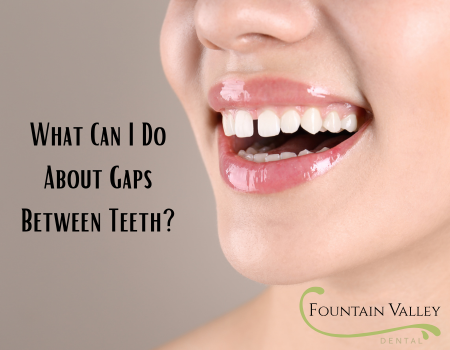Having gaps between teeth, commonly known as diastema, is a concern for many individuals. While some people embrace their unique smiles, others may feel self-conscious and seek solutions to close the gap. Fortunately, various treatment options are available, depending on the cause of the spacing and your personal preferences.
Understanding the Causes of Gaps Between Teeth
 Before deciding on a course of action, it’s essential to understand what causes gaps between teeth. Some common reasons include:
Before deciding on a course of action, it’s essential to understand what causes gaps between teeth. Some common reasons include:
- Genetics: For many people, gaps in teeth run in the family. If your parents or siblings have similar spacing, it could be a genetic trait.
- Size of Teeth vs. Jawbone: If your jaw is larger than your teeth, spaces may develop. This is often seen in individuals with smaller teeth and larger jaw structures.
- Missing Teeth: If you’ve lost a tooth due to decay or injury, surrounding teeth may shift, creating gaps.
- Gum Disease: Advanced gum disease can lead to tooth loss and shifting, resulting in gaps.
- Thumb Sucking: In children, thumb sucking can affect the positioning of teeth and lead to gaps.
Understanding the underlying cause of your gap can help determine the best course of action. If you’re unsure about the cause, consulting a dental professional, like those at Fountain Valley Dental, can provide clarity and tailored advice.
Treatment Options for Gaps Between Teeth
Once you’ve identified the cause of your gaps, you can explore various treatment options:
- Orthodontic Treatment
Braces or clear aligners are popular methods for closing gaps between teeth. Orthodontics can adjust the positioning of your teeth, creating a more aligned and aesthetically pleasing smile.
– Traditional Braces: Metal brackets and wires are used to gradually move teeth into their desired positions. This method is highly effective for larger gaps and misaligned teeth.
– Clear Aligners: Systems like Invisalign offer a more discreet alternative to traditional braces. Custom-made plastic trays gradually shift teeth into place and can be removed for eating and brushing.
Consulting with an orthodontist or your dentist can help you determine the best approach based on your specific situation to close the gaps between teeth.
- Dental Bonding
If you have a small gap, dental bonding may be an effective solution. This procedure involves applying a tooth-colored resin to the teeth adjacent to the gap. The dentist shapes the resin to match the natural contour of your teeth, effectively closing the space.
– Pros: Dental bonding is quick and relatively inexpensive, often completed in a single visit.
– Cons: While durable, bonding may not be as long-lasting as other solutions and may require touch-ups or replacements over time.
- Veneers
Porcelain or composite veneers can also be used to close gaps between teeth. These thin shells are custom-made and bonded to the front of your teeth. Veneers can correct various cosmetic issues, including gaps, discoloration, and misalignment.
– Pros: Veneers offer a natural appearance and are highly durable, typically lasting over a decade with proper care.
– Cons: The process involves removing a small amount of enamel from your teeth, and veneers can be more costly than other options.
- Bridges or Implants
If a gap is due to a missing tooth, you might need a dental bridge or an implant.
– Dental Bridges: This option involves placing a crown on the teeth adjacent to the gap and attaching a false tooth in between.
– Dental Implants: An implant consists of a titanium post surgically placed in the jawbone, serving as a new root for a crown that fills the gap.
Both solutions not only restore your smile but also improve functionality and prevent neighboring teeth from shifting.
- Regular Dental Check-Ups
Maintaining regular dental check-ups is crucial for overall oral health. Your dentist can monitor gaps and their progression, providing recommendations tailored to your needs. If you have concerns about gaps between teeth or any changes in your teeth, it’s essential to discuss these with your dentist during your visit.
A gap between teeth can be addressed through various methods, ranging from orthodontics to cosmetic treatments. The best course of action depends on the gap’s size, its cause, and your personal preferences. If you’re considering treatment options, reach out to professionals who can provide expert guidance and solutions tailored to your needs.
For more information and personalized dental care, contact Fountain Valley Dental. Their experienced team can help you navigate the best options to achieve the smile you’ve always wanted. Don’t let gaps hold you back—take the first step toward a confident smile today!